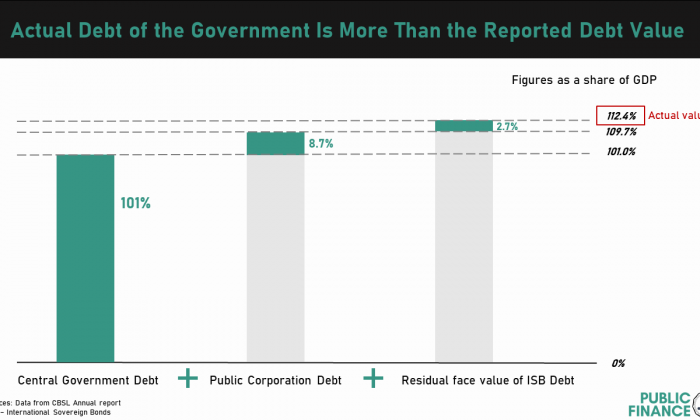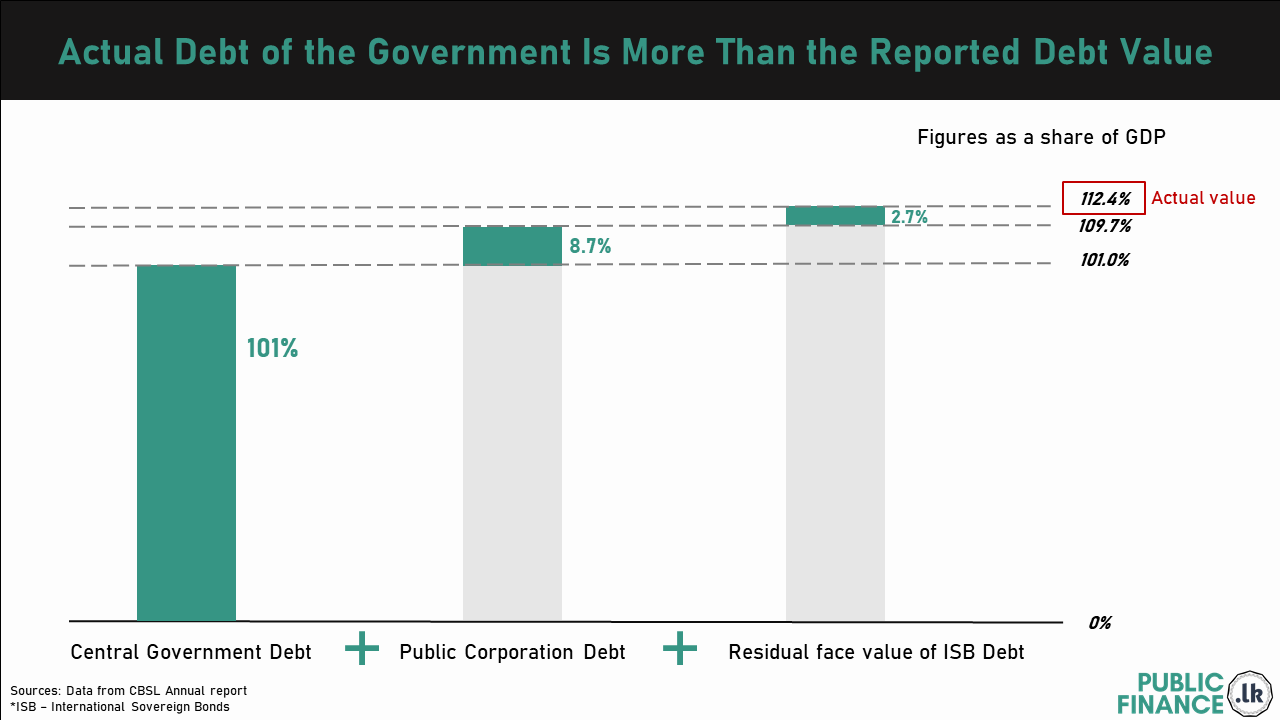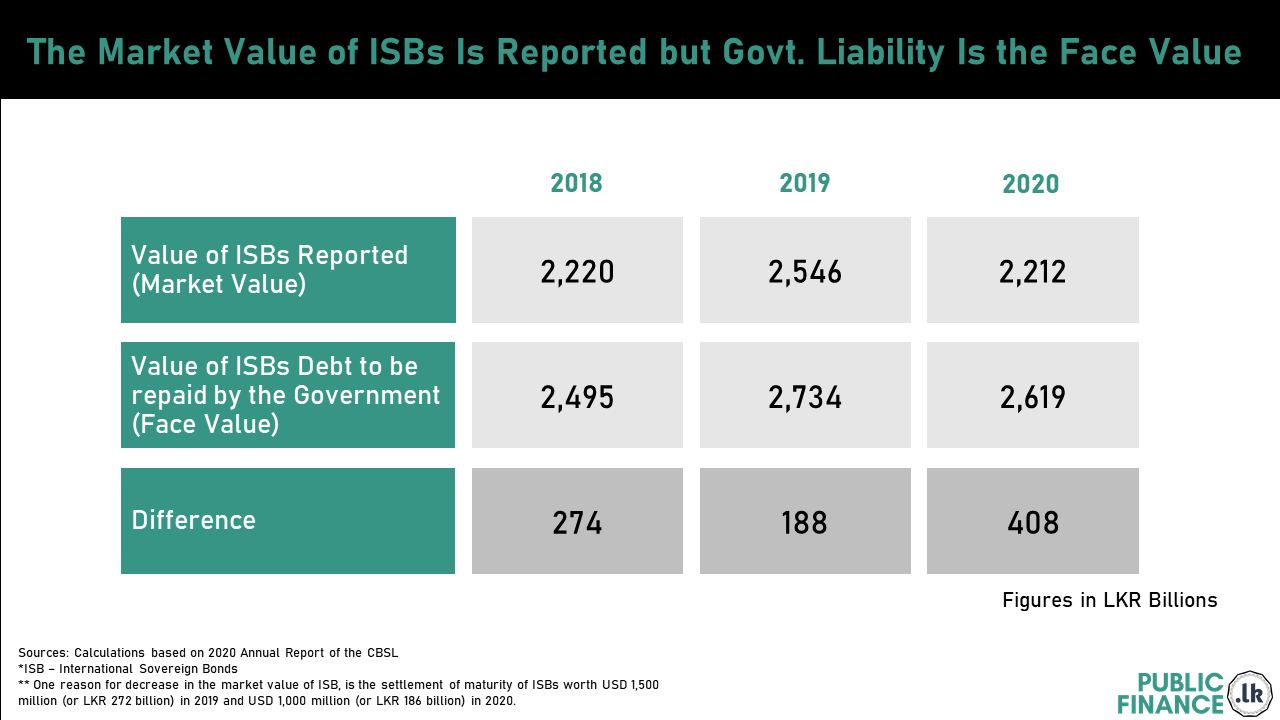



The general understanding of public/government debt is the Central Government Debt as a share of GDP. Data on this could be traced back to the 1950s.( More details: Historical-Government-Debt,-1950-to-2021 )
However, the actual liability of the government is more than the central government debt as it includes public corporation debt as well. In 2020 there is a further element which should be considered which is the residual face value of ISB Debt. The inclusion of both public corporation debt and face value of ISB debt increases the total liabilities of the government to 112.4% of GDP in 2020.
Public corporation debt
It is important to consider public corporation debt in total debt since there have been instances of debt being shifted from the government balance sheet to State Owned Enterprises and vice versa. For instance the government transferred some of the central government debt to the balance sheets of State Owned Enterprises (SOEs) in 2014.( More Details : 3 Problems on Debt Numbers Navigating Sri Lanka's Debt: Better reporting can help – a case study on China debt )
The total debt held by these public corporations amounts to LKR 1,309 billion or 8.7% of GDP in 2020. The total public debt amounts to 109.7% of GDP with the addition of the public corporation debt to central government debt.

Residual Face Value of ISB

The total value of debt in the form of International Sovereign Debt(ISBs) for 2020 is reported in the CBSL Annual Report as LKR 2,212 billion including LKR 416 billion reported as domestic debt. However, this figure is reported in book value/market value terms. That means the value of debt changes based on the price of ISBs in the market. Sri Lanka's ISB prices declined significantly in 2020 following credit rating downgrades.
While ISB debt has been recorded at market value, at the end of the maturity period the government pays back the face value of the ISB and not the market value. Unless, the government is able to buy back the ISB at current price in the market — which is improbable given the lack of reserves or other financing sources to purchase the entirety of outstanding ISB debt. Therefore, the actual liability that needs to be paid by the government is the face value of the ISBs. This increases the total liabilities to be paid by the government by LKR 408 billion (equivalent to 2.7% of GDP) in 2020. As a result the total liabilities of the government increases to 112.4% of GDP in 2020.